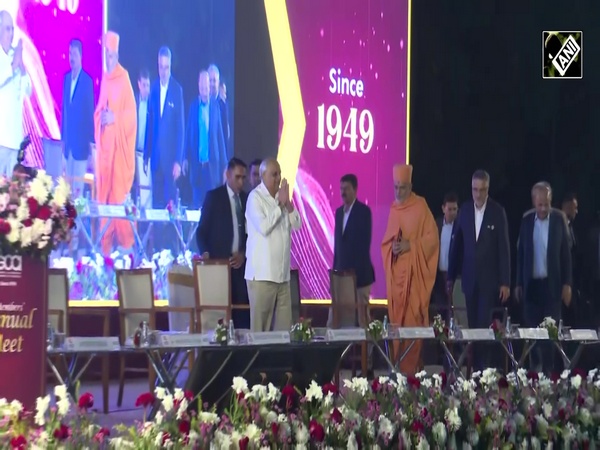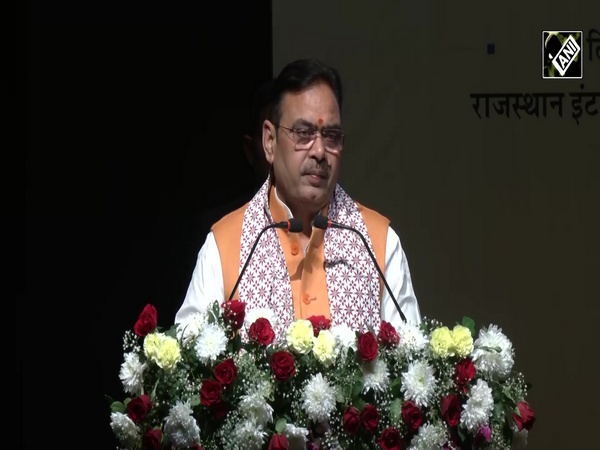'Secret behind high speed of Russia's COVID-19 vaccine creation was the country's expertise in vaccine research'
Aug 11, 2020

Moscow [Russia], August 11 : After the first coronavirus vaccine in the world was registered in Russia, Russian Direct Investment Fund (RDIF) CEO Kirill Dmitriev said, in his opinion piece for Sputnik, that the secret behind the high speed of Russia's COVID-19 vaccine creation was the country's expertise in vaccine research.
Dmitriev also praised the unique two-vector approach of the Gamaleya Microbiology Research Center, reported Sputnik.
Shortly after announcing the first COVID-19 vaccine, Russian President Vladimir Putin on Tuesday said his daughter, who was given a shot of the vaccine, had developed a slight fever but then recovered and now her antibody titers are high.
"In this sense, she took part in the experiment. After the first vaccination, she had a body temperature of 38 degrees Celsius, while the following day it was slightly over 37 degrees Celsius, that's it. After the second injection, the second vaccination, her temperature also rose a little, and then everything cleared up, she feels good and the [antibody] titers are high," Sputnik quoted Putin as saying earlier in the day.
According to the report, the vaccine, named Sputnik V, was developed jointly by the Gamaleya Research Institute and the Russian Defense Ministry.
While many Western media outlets and politicians question the high speed of Russia's COVID-19 vaccine creation, expressing concerns about its efficacy and authenticity, the secret behind this success is the country's expertise in vaccine research, the RDIF chief noted, reported Sputnik.
Ever since the outbreak of coronavirus, which has infected millions worldwide, several companies were in the race to develop a vaccine.
"Since the 1980s, the Gamaleya Center has led the effort to develop a technological platform using adenoviruses, found in human adenoids and normally transmitting the common cold, as 'vectors' or vehicles, which can induce a genetic material from another virus into a cell ... The technological platform of adenovirus-based vectors makes it easier and faster to create new vaccines through modifying the initial carrier vector with genetic material from new emerging viruses," Dmitriev explained.
"Other countries follow in our footsteps developing adenoviral vector-based vaccines. Oxford University is using an adenovirus from a monkey, which has neither been used in an approved vaccine before unlike human adenoviruses. U.S. company Johnson & Johnson is using adenovirus Ad26 and China's CanSino - adenovirus Ad5, the same vectors the Gamaleya Center is using, but they are yet to master the two-vector approach," Dmitriev added.
RDIF believes that adenoviral vector-based vaccines will be the winners "in the global vaccine race to fight coronavirus," but even in this category the Gamaleya vaccine "has the edge," the official concluded, according to the Sputnik report.
According to the Indian Council of Medical Research (ICMR), three Indian COVID-19 vaccines are in different phases of clinical testing at present.
The Oxford vaccine, being manufactured by Serum Institute of India (SII) got approval for phase 2 and 3 clinical trials, the Indian Council of Medical Research said on August 3.
The University of Oxford had begun the clinical trials of a potential COVID-19 vaccine on humans in April. The Oxford vaccine -- called ChAdOx1 nCoV-19 -- is made from a harmless chimpanzee virus, the university confirmed to CNN.
On May 5, The Jerusalem Post reported the Israel Institute for Biological Research (IIBR), a secretive unit that works under the Prime Minister's Office, of confirming that the development phase of COVID-19 antibody or passive vaccine that attacks the virus and neutralises it in the body has been completed.
According to the latest global update by the Johns Hopkins University, a total number of 20,092,855 people have been tested positive of coronavirus and 736,254 deaths have been reported so far.
The World Health Organisation had declared the outbreak of the new coronavirus a pandemic on March 11.



















